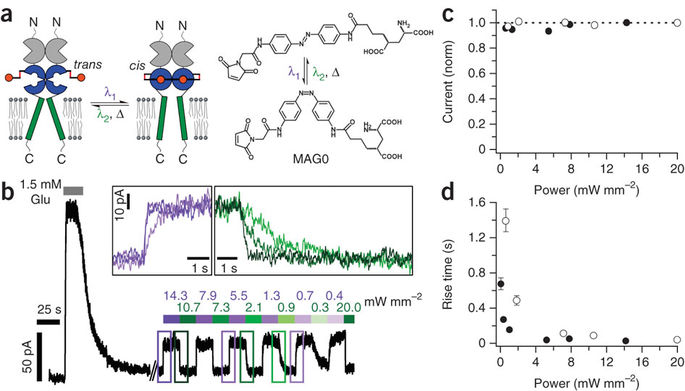
A light-gated, potassium-selective glutamate receptor for the optical inhibition of neuronal activity
Abstract
Genetically targeted light-activated ion channels and pumps make it possible to determine the role of specific neurons in neuronal circuits, information processing and behavior. We developed a K+-selective ionotropic glutamate receptor that reversibly inhibits neuronal activity in response to light in dissociated neurons and brain slice and also reversibly suppresses behavior in zebrafish. The receptor is a chimera of the pore region of a K+-selective bacterial glutamate receptor and the ligand-binding domain of a light-gated mammalian kainate receptor. This hyperpolarizing light-gated channel, HyLighter, is turned on by a brief light pulse at one wavelength and turned off by a pulse at a second wavelength. The control is obtained at moderate intensity. After optical activation, the photocurrent and optical silencing of activity persists in the dark for extended periods. The low light requirement and bi-stability of HyLighter represent advantages for the dissection of neural circuitry.